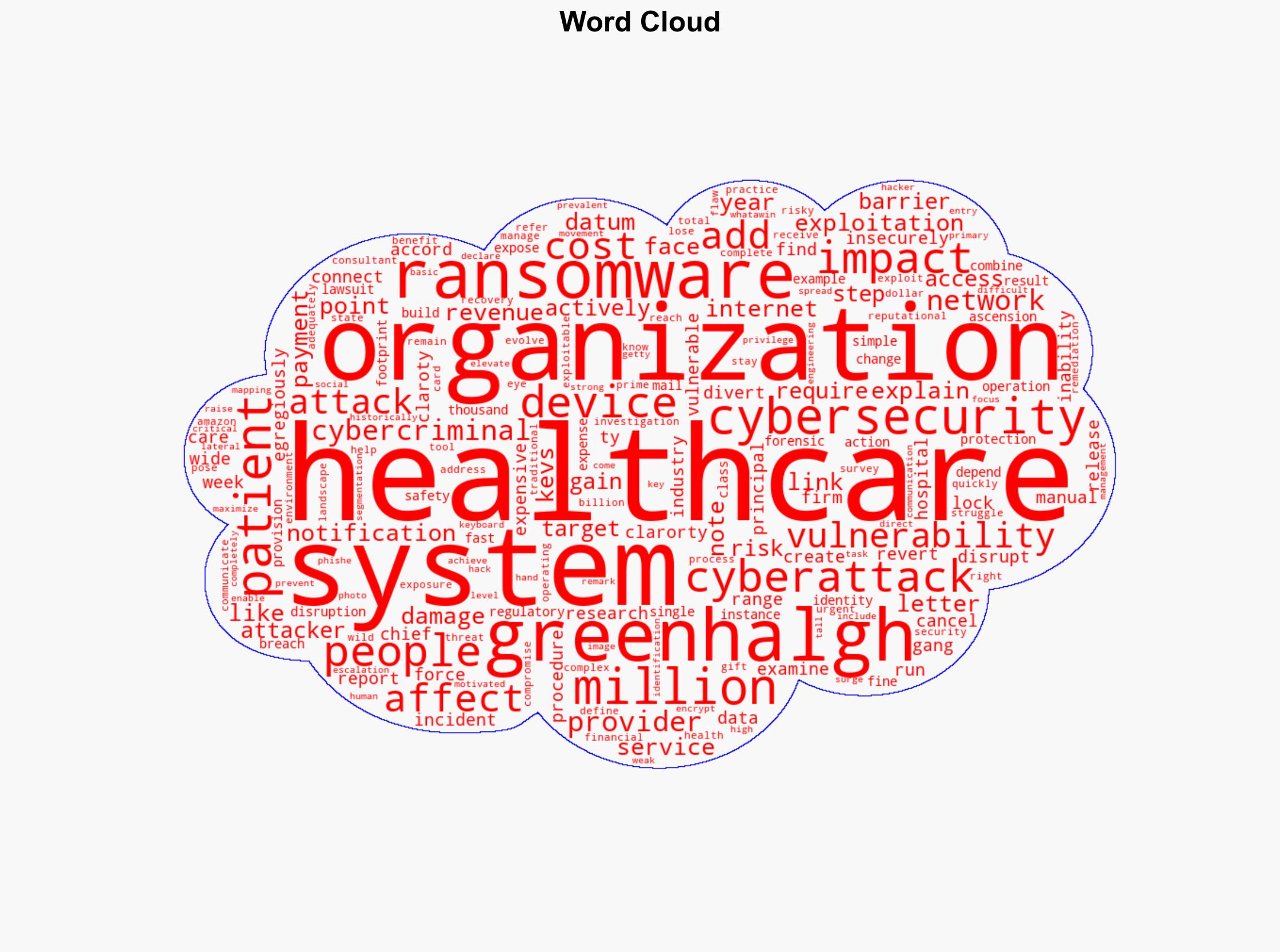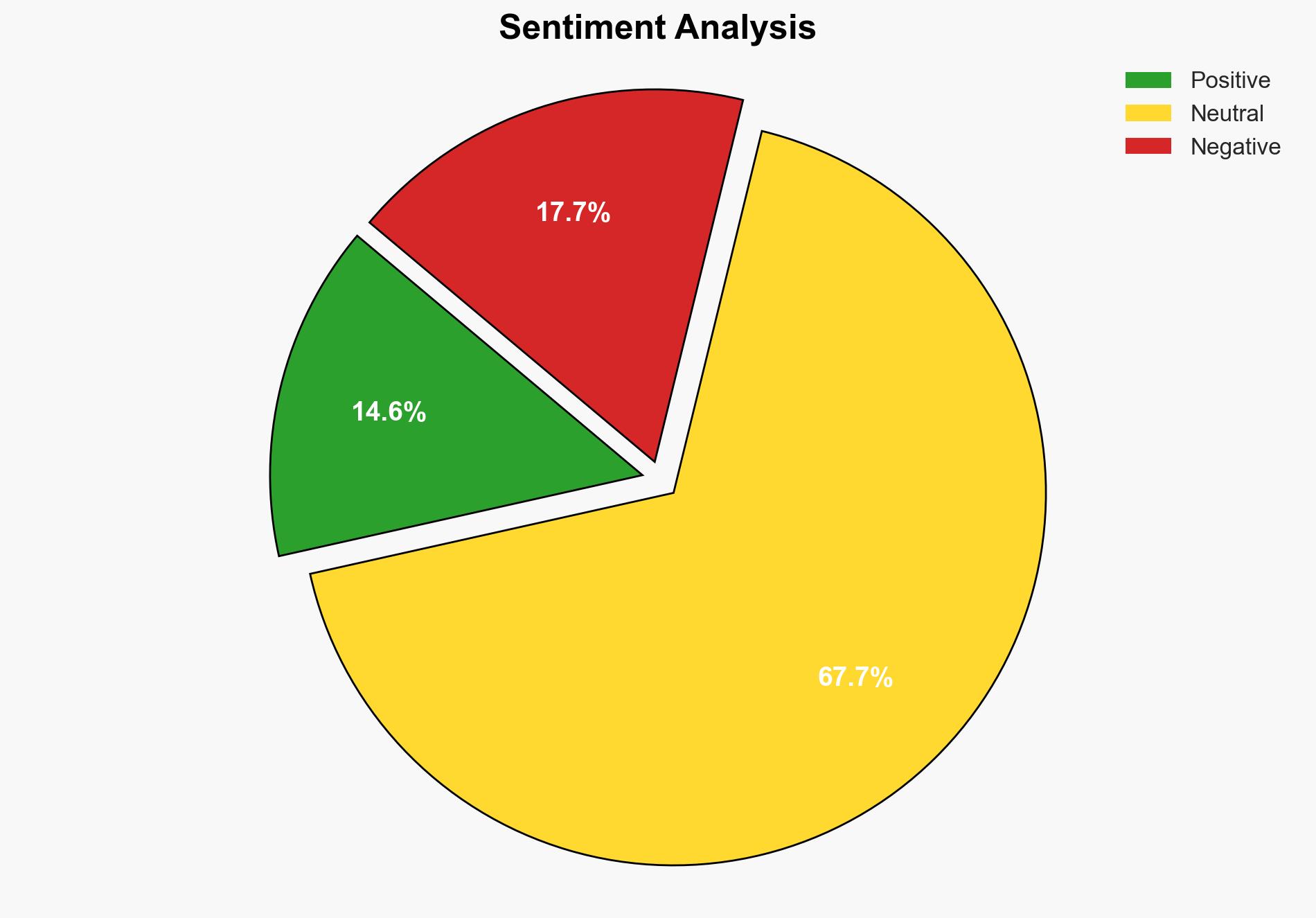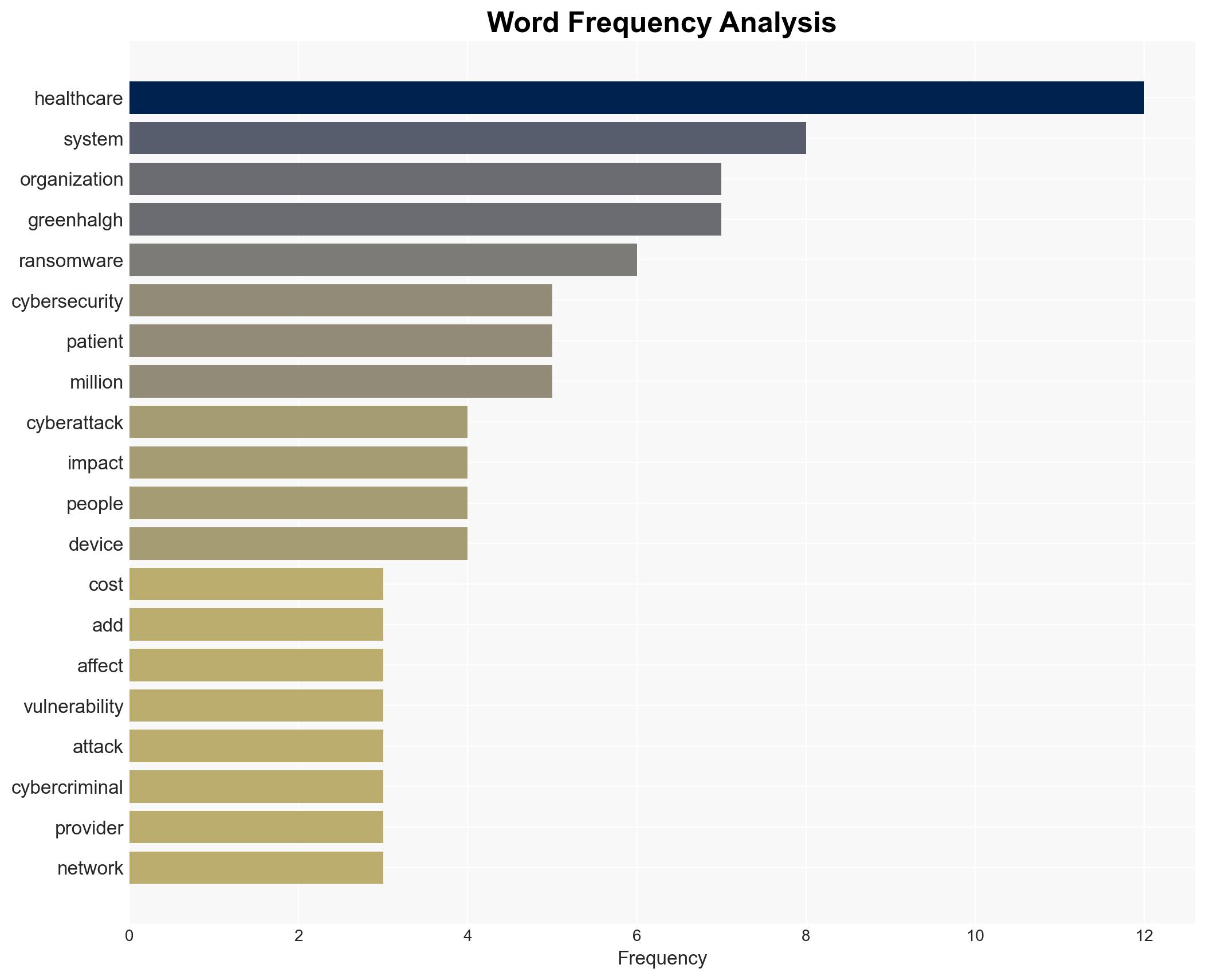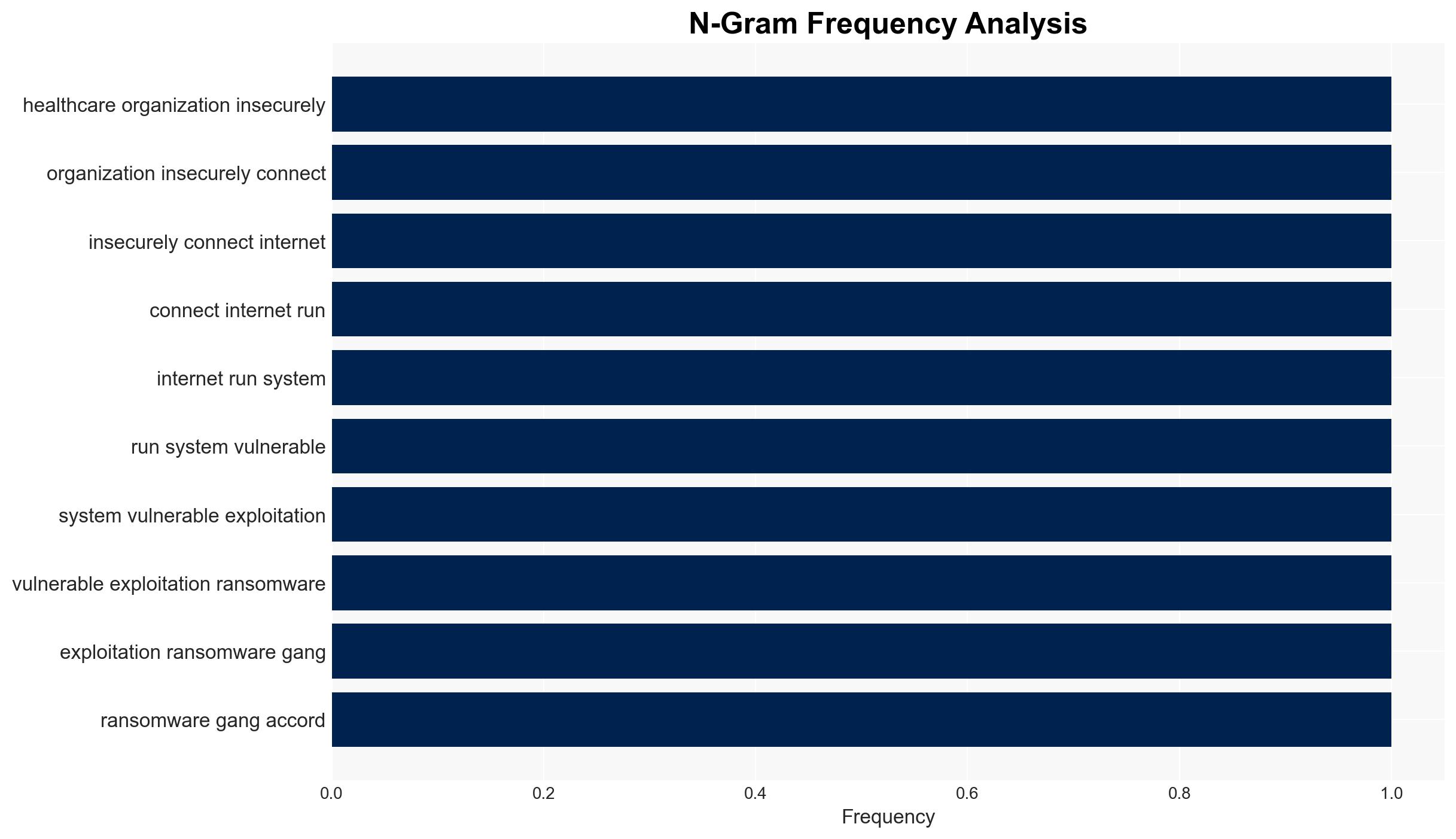Most Healthcare Providers Remain Highly Vulnerable To Ransomware Attacks – MedCity News
Published on: 2025-03-31
Intelligence Report: Most Healthcare Providers Remain Highly Vulnerable To Ransomware Attacks – MedCity News
1. BLUF (Bottom Line Up Front)
Healthcare providers are increasingly vulnerable to ransomware attacks due to insecure internet connections and outdated systems. The financial and operational impacts of these cyberattacks are significant, affecting patient care and organizational revenue. Immediate action is required to enhance cybersecurity measures and reduce exposure to these threats.
2. Detailed Analysis
The following structured analytic techniques have been applied for this analysis:
General Analysis
Recent research indicates that healthcare organizations are prime targets for ransomware gangs due to their insecure internet connections and vulnerable systems. The financial repercussions include ransomware payments, regulatory fines, and costs associated with identity protection services. The disruption of services can lead to diverted patients, canceled procedures, and manual operations, significantly impacting revenue and patient safety.
Cybercriminals exploit known vulnerabilities, referred to as KEVs, which require urgent remediation. Traditional cybersecurity tools and processes are inadequate for managing these vulnerabilities, as the threat landscape evolves rapidly. Historically, human error through phishing and social engineering was the primary entry point for attackers. However, direct system hacks are becoming more prevalent.
3. Implications and Strategic Risks
The strategic risks include potential threats to national security due to the exposure of sensitive healthcare data. The economic impact is substantial, with potential costs reaching billions of dollars. The healthcare sector’s inability to quickly adapt to evolving threats poses a risk to regional stability and patient care continuity.
4. Recommendations and Outlook
Recommendations:
- Implement comprehensive cybersecurity measures, including device identification, communication mapping, and network segmentation.
- Enhance vulnerability management practices to address known exploitable vulnerabilities (KEVs).
- Invest in employee training to reduce the risk of phishing and social engineering attacks.
- Encourage regulatory bodies to enforce stricter cybersecurity standards for healthcare providers.
Outlook:
In the best-case scenario, healthcare providers will adopt robust cybersecurity practices, significantly reducing the risk of ransomware attacks. In the worst-case scenario, continued vulnerabilities could lead to widespread data breaches and financial losses. The most likely outcome is a gradual improvement in cybersecurity measures, with ongoing challenges in keeping pace with evolving threats.
5. Key Individuals and Entities
The report mentions Ty Greenhalgh as a key individual providing insights into the cybersecurity challenges faced by healthcare organizations.




